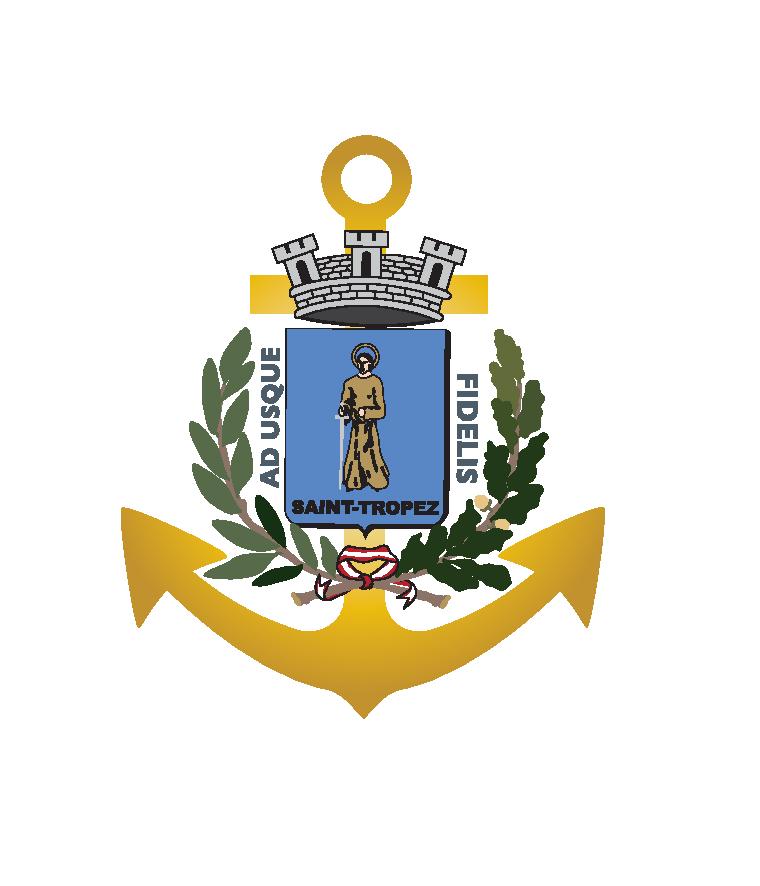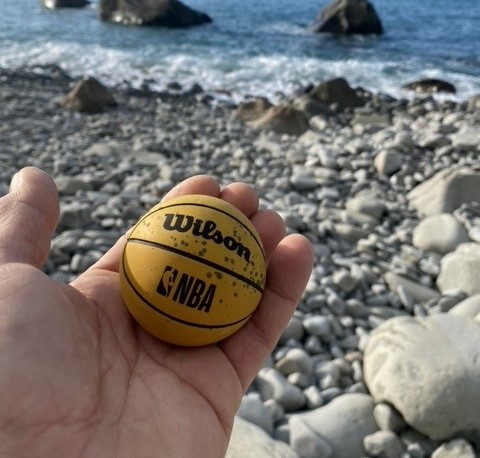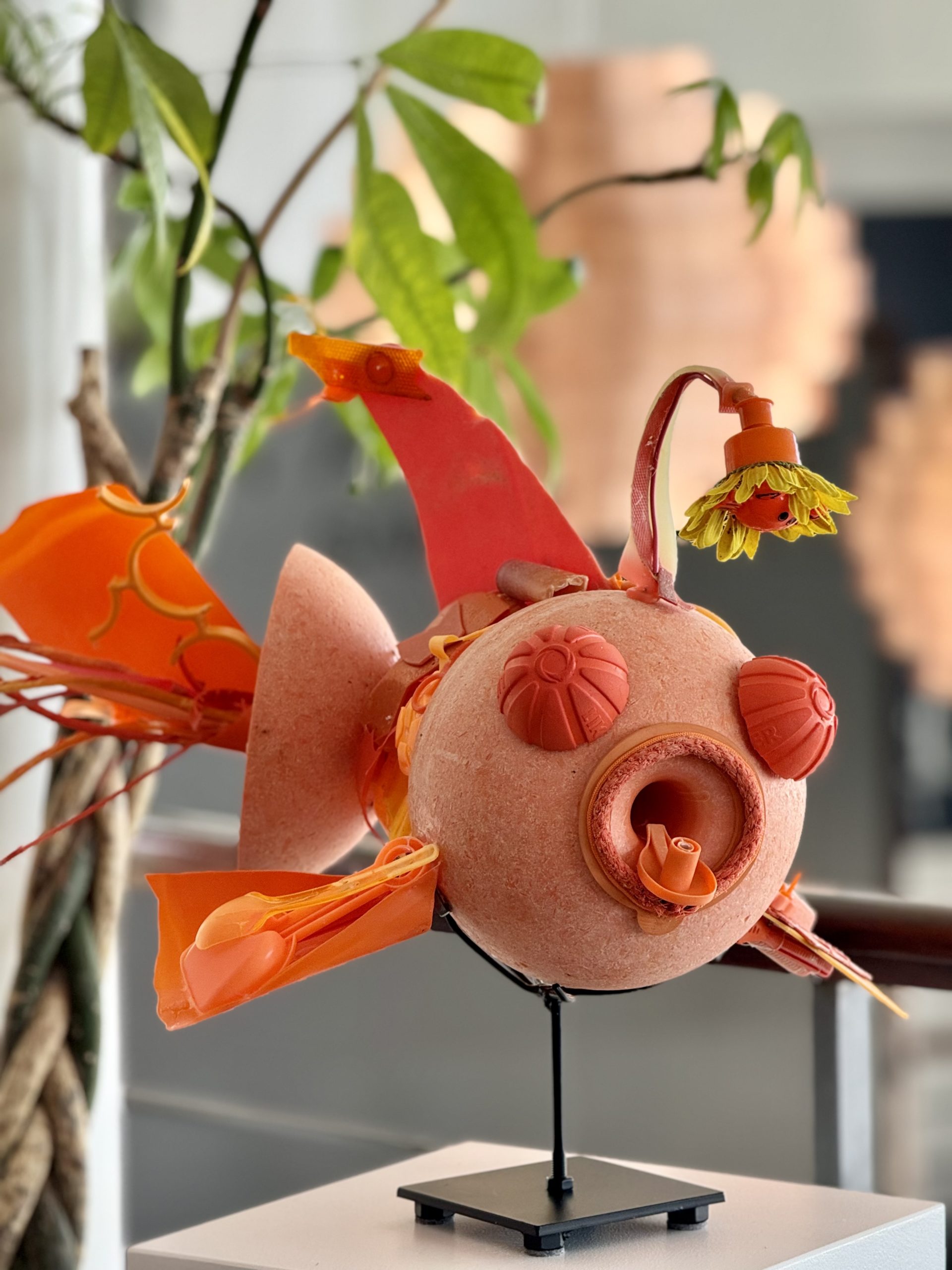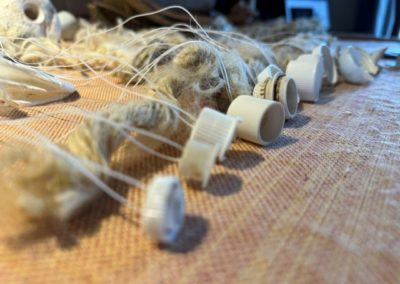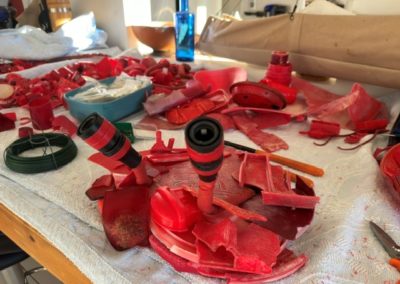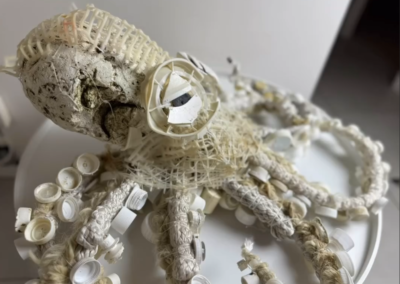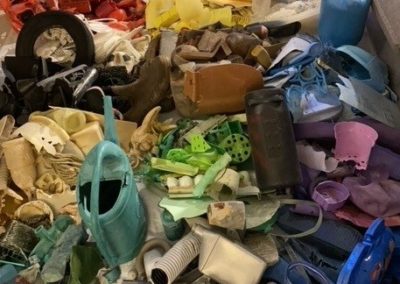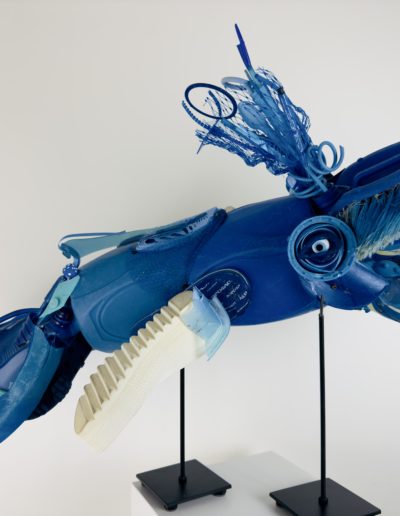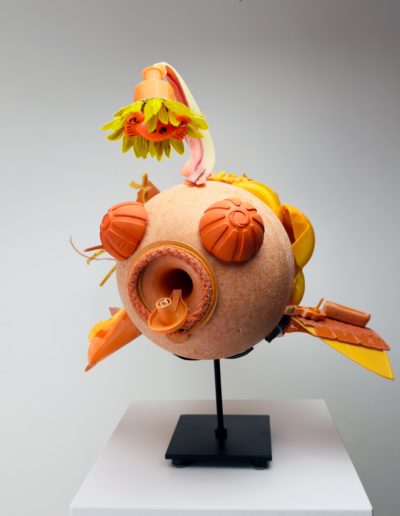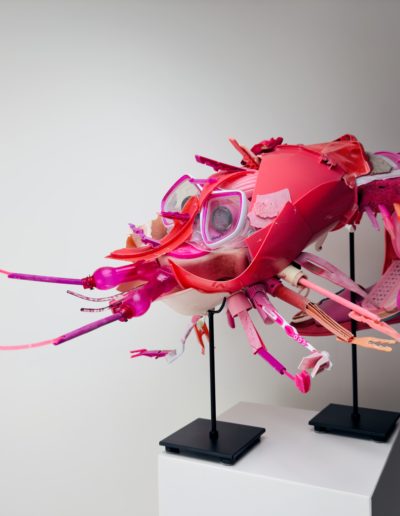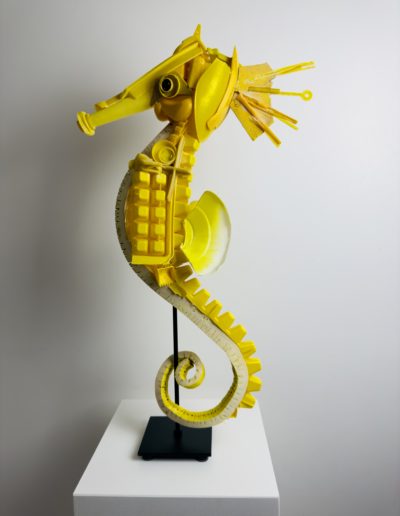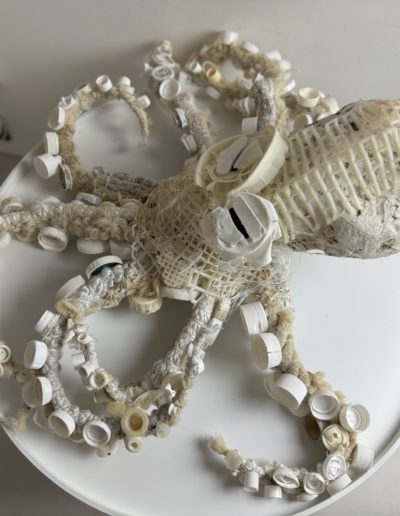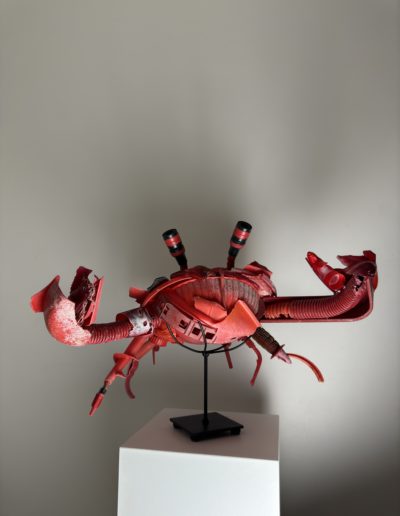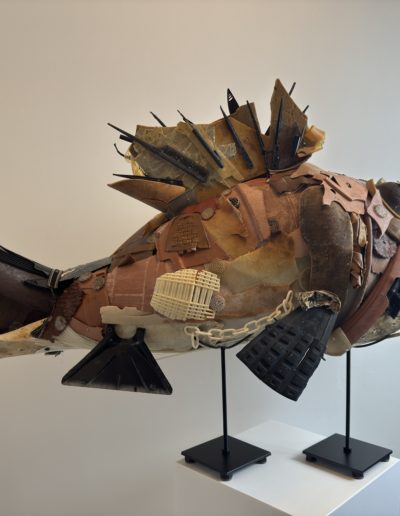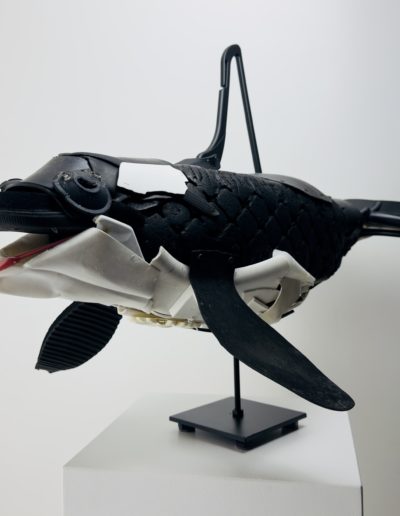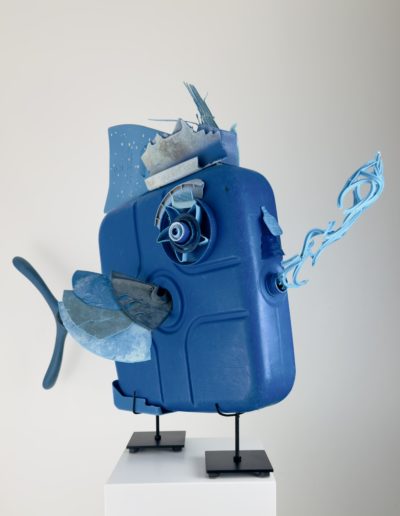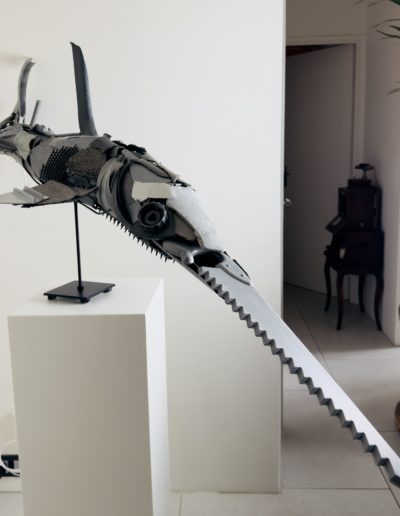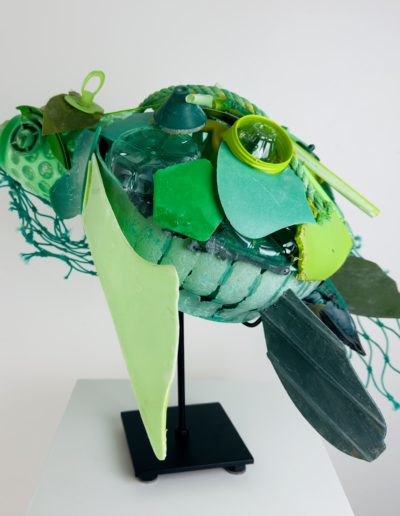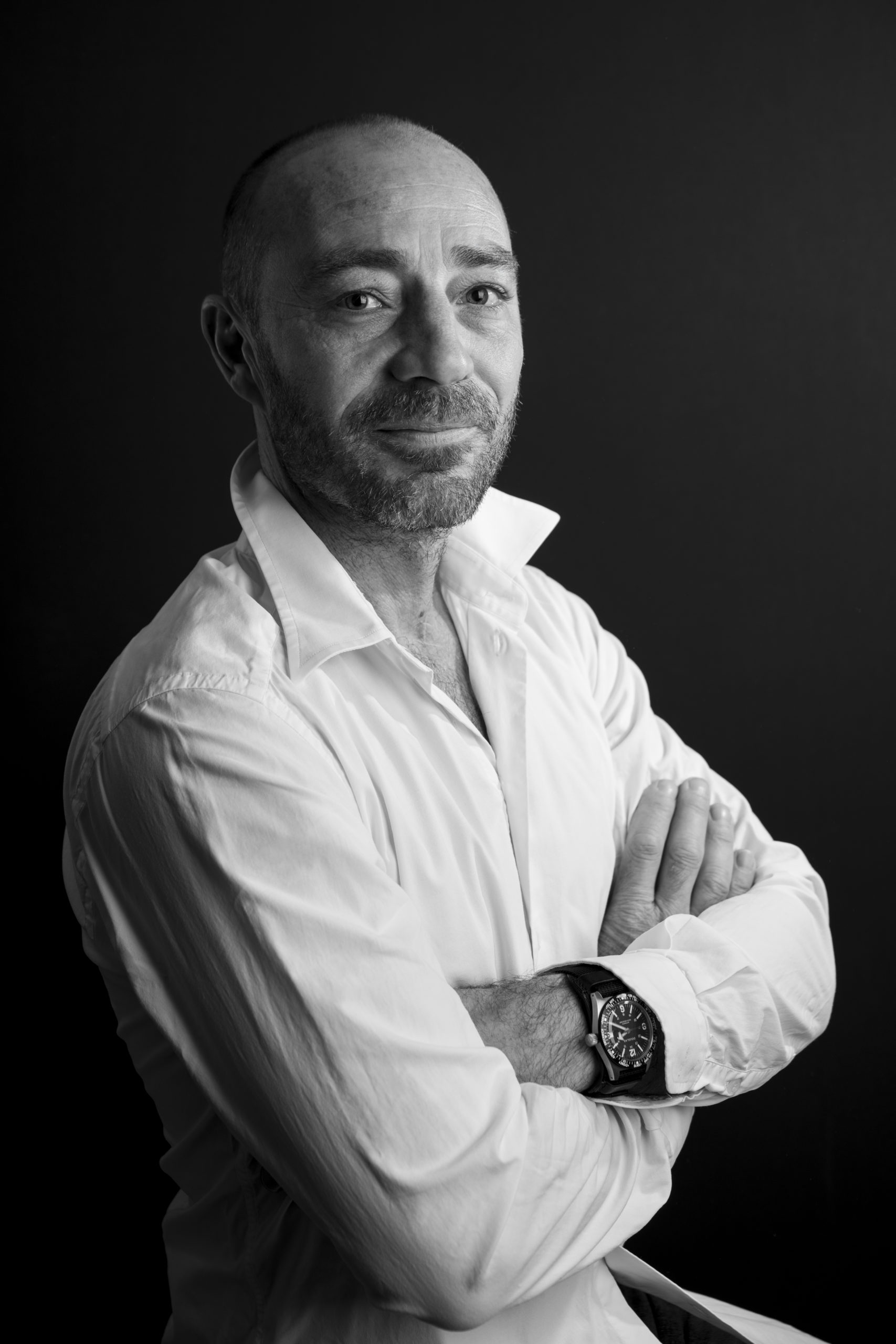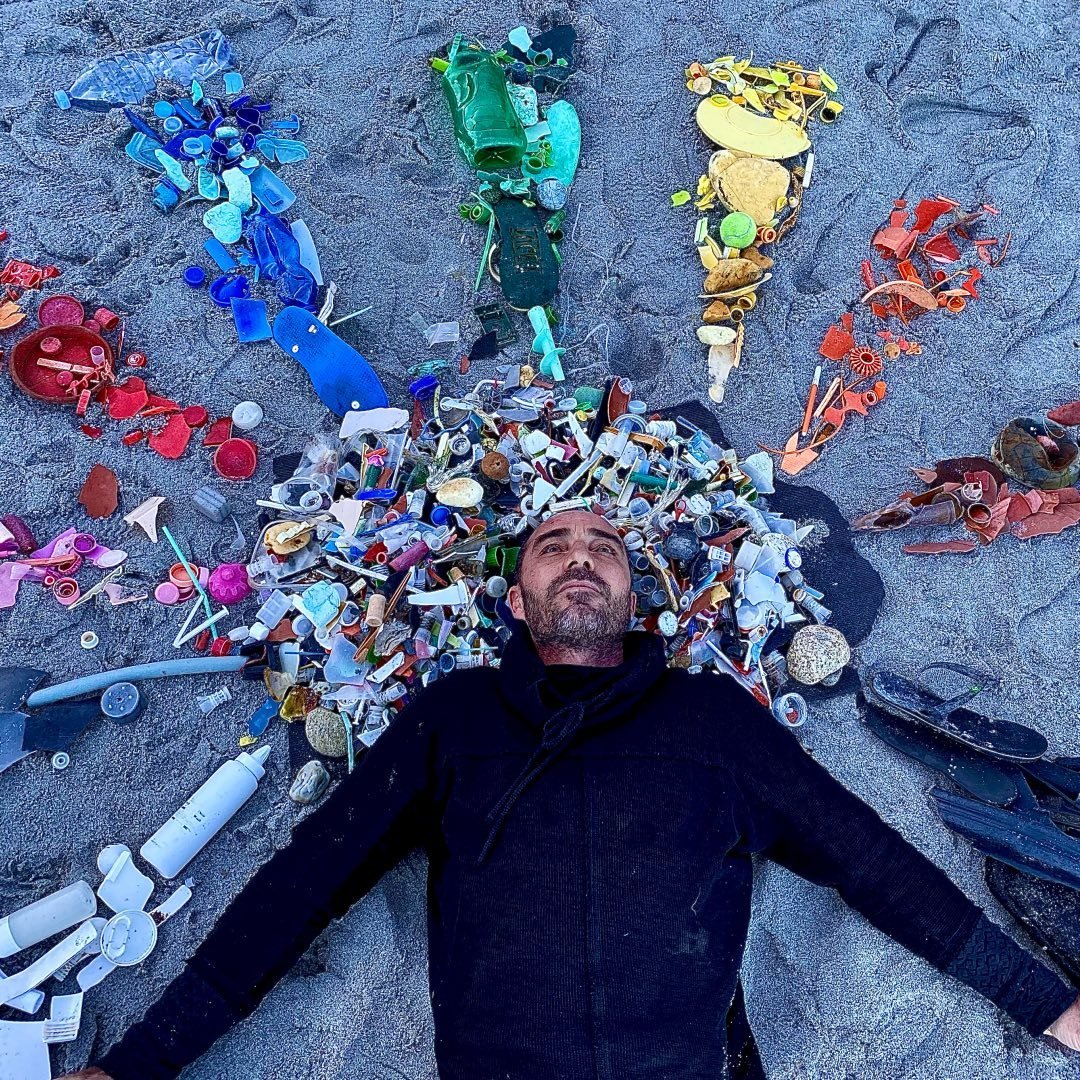
Martin Heinisch, artist and sailor, creates sculptures and works of art from marine plastic debris to raise awareness of sea pollution. His commitment to the environment is reflected in each piece, highlighting the fate of marine wildlife and the devastating effects of human behaviour. An exhibition of his artworks is taking place at the harbour Master’s office in Saint-Tropez this summer.
The artist shares with us his background, his inspiration for the exhibition, and his commitment to the environment through his art.
During his years as a captain sailing the Mediterranean waters, Martin witnessed the extent and damage of human pollution on the beaches he visited. From beach to beach, collecting rubbish, his observation is always the same: “No beach is spared. From large objects to microplastics, the only beaches where you don’t find much of it are those that are cleaned all the time. But this masks the problem. It’s the myth of Sisyphus” he says. He believes that plastic pollution, which is highly visible, could be rapidly reduced if consumers and manufacturers were to commit to changing their habits. So, he decided to take an active role in the fight against this problem.
Nowadays, Martin works alone to collect these wastes from Mediterranean beaches (more regularly those on the French Riviera), which will be transformed into artworks. The artist’s process is “simple”: he collects the plastic, methodically cleans it, dries it, then sorts it by colour in bins. He claims that the quantity of waste is so great that he can cover the whole spectrum of colours. This is why he chooses to make monochrome ecosculptures, because the choice is simply there! “I’m trying to show two things through my work: the first is how splendid the animal world is, so little known by most of us. The second is that we need to learn again how to make the most of lasting objects, those that the local shopkeeper and craftsman can repair, or you, if you decide to learn how to use your hands…” he says.
Working with recycled materials has its challenges. The components, sometimes worn by the weather and the sun, become fragile. Their quality of use is not guaranteed when a model is being made. During collection, safety and hygiene are also an issue, due to the difficulty of accessing certain beaches and the conditions in which they are. However, it is these very difficulties that make these works so unique. Each piece collected tells a story and each work has a particular meaning.
” Art show, raising awareness and working with children in schools are all things that have a special meaning for me” -M. Heinisch
For Martin, art is a powerful means of raising awareness. Through his ecosculptures, he hopes to convey a clear message: plastic pollution is a serious but solvable problem. He hopes that his work will encourage people to think about their consumption and the importance of preserving our environment. “It’s a very positive way of getting messages across. People are flooded with alarming and stressful news about ecology. Art is a way of touching people’s hearts, getting them to think and question in a constructive way,” he says.
The artist believes that “committed” art will become more widespread in the future, as long as pollution remains an issue. For the time being, he is meeting various people interested in his art, both French and foreign, although he acknowledges that there is a stronger tendency among women.
Now that the impact of his work has been recognised, the artist is having his first exhibition in Nice, in collaboration with Julie Gautier (a freediver, choreographer and underwater filmmaker), who is also committed to ocean conservation. He also took part in several ecological workshops in the Gulf of Saint-Tropez. In 2024, his art is shown in the Yachting Concept agency, whose director Jeremy Solodilow is also very sensitive to the issue of ocean conservation. He also exhibited at the Capitainerie (Harbour Master’s Office) of Saint-Tropez, which recently got certified “Ports Propres” testifying its commitment to a green future.
With ambitious future plans, Martin intends to continue raising awareness through his art and to collaborate with other artists and institutions to promote the protection of the oceans. His first objective is to find a studio/gallery in the Gulf of Saint-Tropez to better manage his business and welcome school groups. In the meantime, he continues to collect waste, create and inspire those who cross his path.
Interview with the artist
You chose to exhibit at the Saint-Tropez Lounge Club, the club run by the harbour master's office at the Port of Saint-Tropez. How do you see the role of ports and maritime communities in the fight against ocean pollution?
They’re not the only ones, obviously, but the role of ports and maritime communities is crucial in the fight against ocean pollution. They are among the major players, since most sea people pass through them. So we need to guide them, raise their awareness and give them the means to avoid polluting. I’d like to take this opportunity to say a huge thank you to the Saint Tropez harbour master’s office, from the port manager to the seasonal workers, who have all supported me in my project and enthusiastically welcomed my sculptures into their premises!
The city is very committed to protecting the environment. After all these years as a captain in the region and now as a committed artist, how do you see the ecological evolution of our coastline?
There has been a noticeable change, more and more things are being done. I can see the difference with other countries when I travel…
However, there is still a great deal to be done. Particularly on certain issues that need to be tackled beforehand. And here I’m obviously talking about plastic pollution. A huge effort is being made by the local authorities in the Gulf to clean up the beaches. But the problem will persist as long as we don’t act upstream, on a large scale. And as long as it does, the oceans will continue to swallow up thousands of tonnes of waste that we no longer see but that is still there, insidiously destroying marine life and ecosystems. We need to continue our efforts to raise awareness, from the elderly to the youngest children, continue to hold meetings to consider the most important actions, continue to invest financially…
Can you share a particular story about one of your works?
A funny story that comes to mind concerns painting… one day, when I was painting, my large work table was overflowing with brushes, rags and various objects, and I was so concentrated that I mechanically raised to my lips my teacup… which turned out to be the cup in which I was rinsing my brushes! (It was quite similar and was sitting right next to it). Suffice it to say that I spat very quickly!…and then burst out laughing…
PORTRAIT OF THE ARTIST
Martin Heinisch
From curious child to committed artist
Born on December 9th, 1976, in the north of France, Martin Heinisch grew up in a creative and committed family. His father, an ironworker, and his mother, a French teacher, nurtured his taste for exploration and creativity. With a brother who is a pilot, a sister who is an ethno-musicologist and classical singer, and another brother who is a landscape gardener with a keen interest in ecology, the family environment was a constant source of inspiration.
In 1989, at the age of 12, Martin had a life-changing experience when he took part in a training organised by the association “La Baleine Blanche”, enabling him to explore the world on board of a sailing boat with other children. During the course, the young participants were able to put themselves in the shoes of reporters, reporting on marine mammals and the living conditions of children in third world countries. By this time, young Martin was already giving life to his curiosity and fascination for nature by drawing pictures of islands, birds and shipwrecks for his parents. This adventure was a decisive turning point, awakening in him a deep passion for the oceans and marine life.
After a traditional school career, he pursued a variety of jobs and travels, while developing his interest in painting and his manual skills. His passion for art and the marine environment has always been present in his life. While working with marine mammals, he bought his first sailing boat, which he decided to restore himself. He spent four years restoring his boat, during which time he perfected his craft skills in relation to navigation.
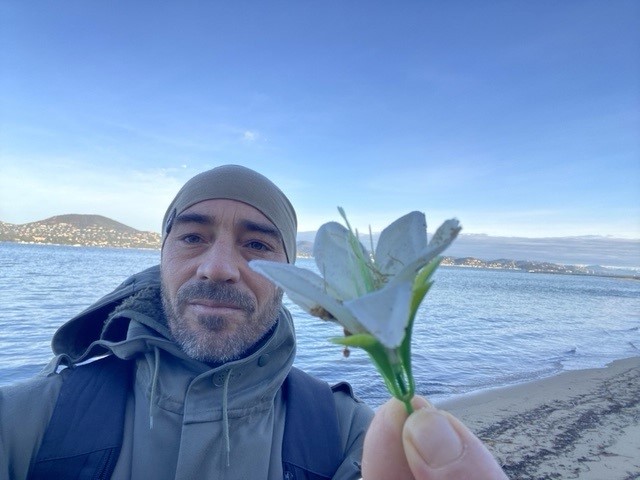
First steps as an ecological sailor
While restoring his boat in the Port of Antibes, he began what he calls his “Story with rubbish”. The artist collected little “treasures” from the rubbish bins in the port, building up his toolbox, his stock of precious woods and various electrical materials, which he dismantled and reassembled to understand their mechanics.
His passion for art intensified over the years, but it was during his work with marine mammals that he really decided to devote himself to his manual talents. Restoring a wooden sailing boat was an opportunity for him to learn the craft, using materials found in the rubbish bins in the port of Antibes.
Captain by day, artist by night
Between 2008 and 2009, he obtained his first professional captain’s diploma and began working in Saint-Tropez, where he developed an attachment to the region and settled permanently. His work as a captain has taken him all over the Mediterranean. Wonderful trips, breathtaking landscapes, but a reality that quickly caught up with him. It was during a trip to Turkey and then Greece, dismayed by the sight of idyllic beaches overrun with rubbish, that the artist had a wake-up call. “I was so shocked by the amount of plastic waste found on remote beaches or in rocks that I decided to get involved in this dramatic pollution issue”, he says. Back in Saint-Tropez, he uses the waste as the main materials for his works. He began by creating monochrome masks, then 3D sculptures of marine animals, which are now on display in the Port of Saint-Tropez.
